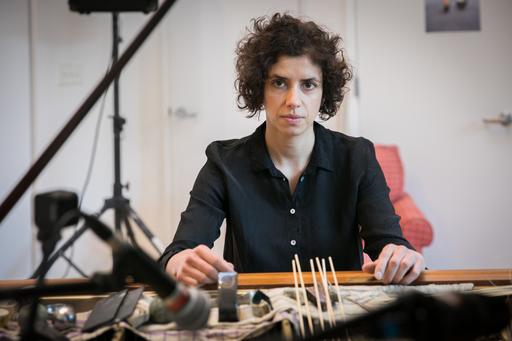
Orchestrating timbre – Unfolding processes of timbre and memory in improvisational piano performance
Short description
Dissertation by Magdalena Mayas, 2019.
In her dissertation, the improvisation pianist Magda Mayas explores new methods and concepts for working with tone quality in relation to space, movement and the listeners’ experience. She does this by creating and performing a series of experimental musical pieces.

“For me, this dissertation is about achieving a deeper insight into the intimate relations among instrument, space and body. This can serve as a tool for improvisation musicians and artists within other fields, but also as an eye-opener for the audience,” says Magda Mayas.
As an improvisation musician, she uses extended piano techniques. This is an experimental approach where sound is created by using objects, such as magnets, balls or fishing line, inside the piano. According to Mayas, this technique allows, on the one hand, the creation of a unique vocabulary of tones and, on the other, a degree of unpredictability from the objects’ odd behaviour inside the body of the piano. Mayas argues that this combination is an exciting starting point for improvising musicians.
By manipulating the piano in these ways, the focus shifts from the pitch and harmony to the large variation of tones that occur. In addition to continuing to develop the existing vocabulary and the systems developed by experimental pianists like John Cage, Magda Mayas wants to expand the improvised music piece to also include space, material, movement and the body as well as the music.
Improvisation and composition are not the opposites sometimes claimed. Instead, in Mayas’s case, there is a constant interaction, a composing in the moment, that includes all the noted components, not only the music. The basic idea is that music must own the space between people, at a location, and that these factors impact how the tones are orchestrated.
“By tone is often meant a crisp sounding phenomenon, but I want to show that this interpretation is not in line with how modern improvisational music works. Variable conditions in the room and in the listeners' situation influence both the work of the musicians with tones and how the listeners experience the music.
In her dissertation project, Magda Mayas also worked in dialogue with and experimented together with other musicians, engineers, instrument makers and a choreographer. The dissertation consists, in part, of listening studies, where Mayas used methods from related fields, such as acoustics and music psychology, to analyse and map tones created using different techniques in different spatial contexts.
Documentation and observations were also made in connection with concerts where Mayas staged different situations. For example, instruments were placed in different places in the room so that the musicians had to move about in a particular way. In another case, using microphones and multichannel sound systems, the listeners were allowed to experience tones as they sound inside the instrument. As part of the dissertation, Magda Mayas discusses the study in so called audio papers with sound examples.
